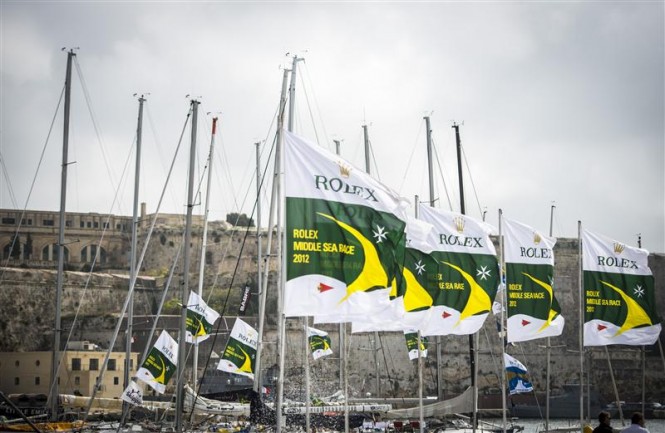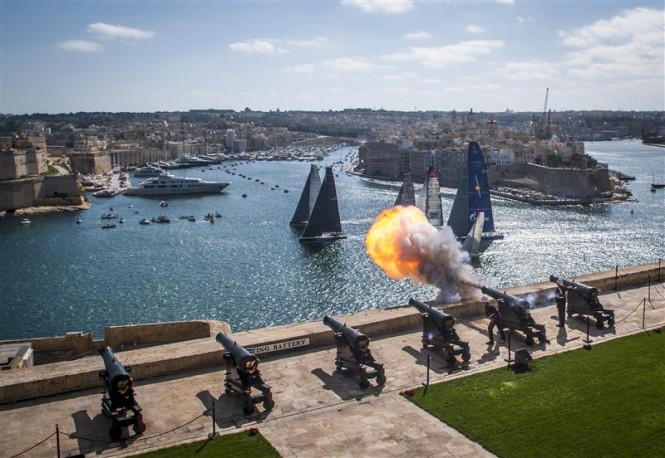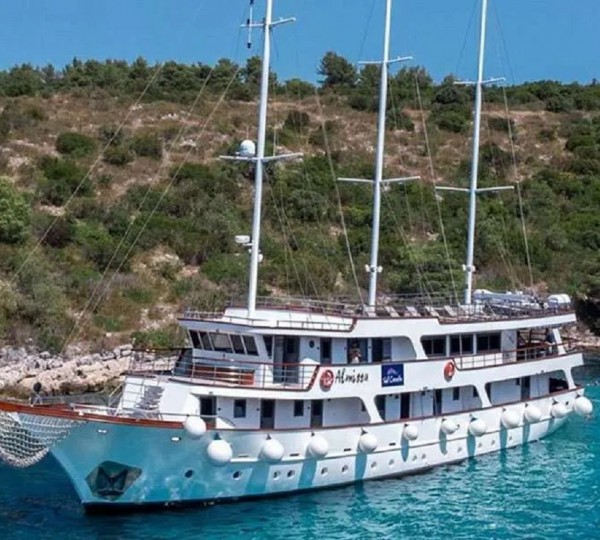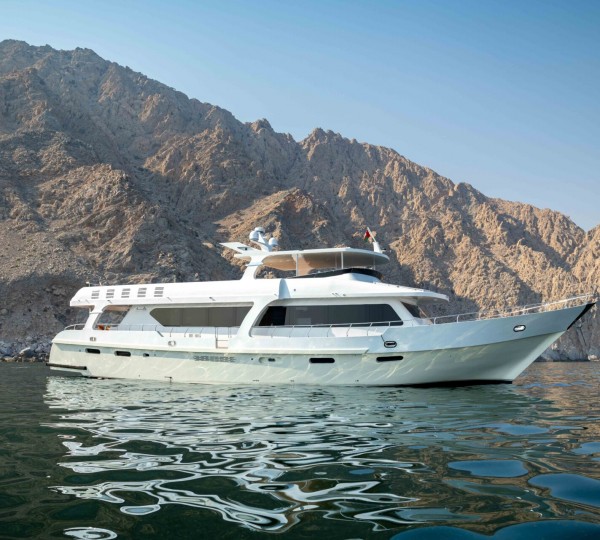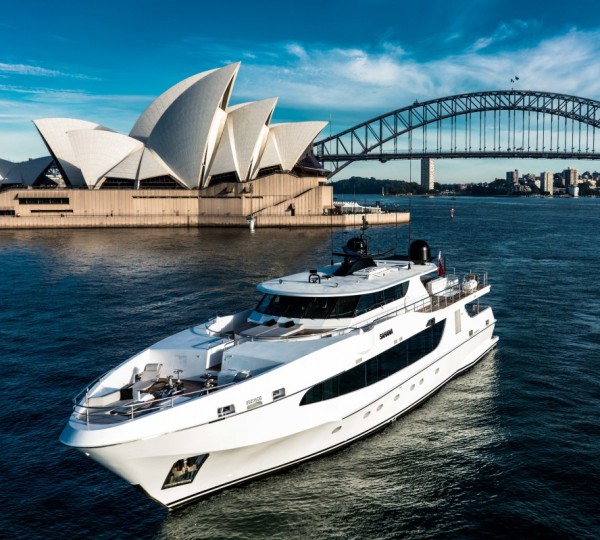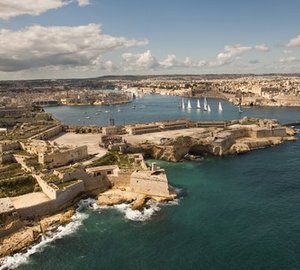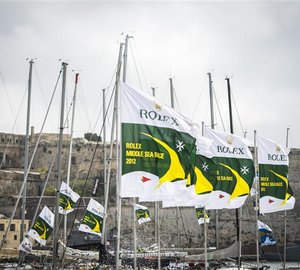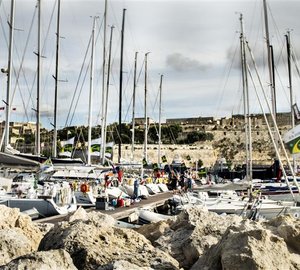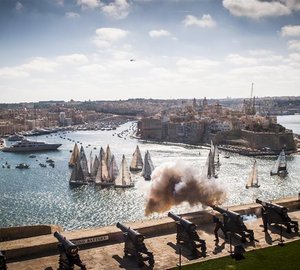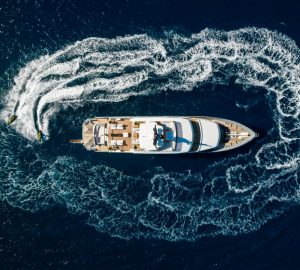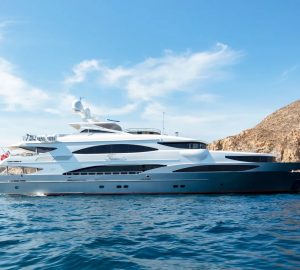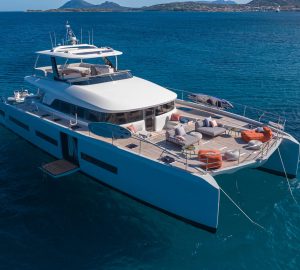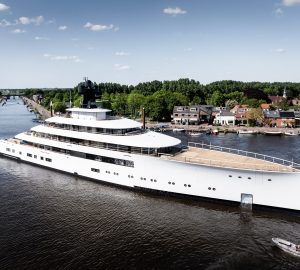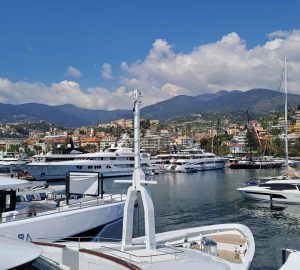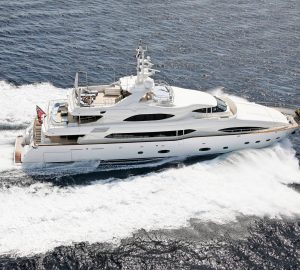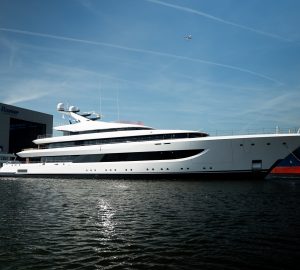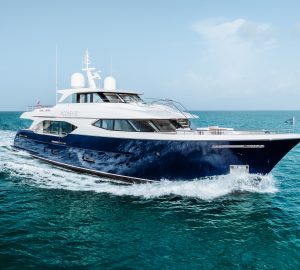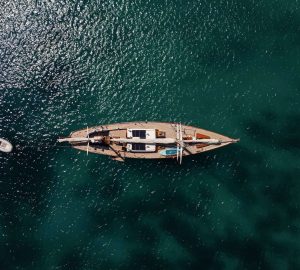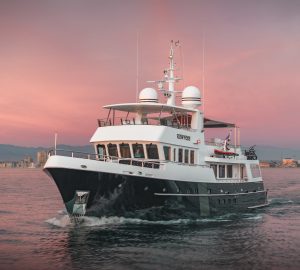Highly competitive, mentally and physically testing, as well as regularly unpredictable offshore competing requires detailed preration and planning. In comparison to long days at sea, this kind of race represents a three dimensional playing field, where the weather, the sea state and the occasional landmass influence tactics and strategy.
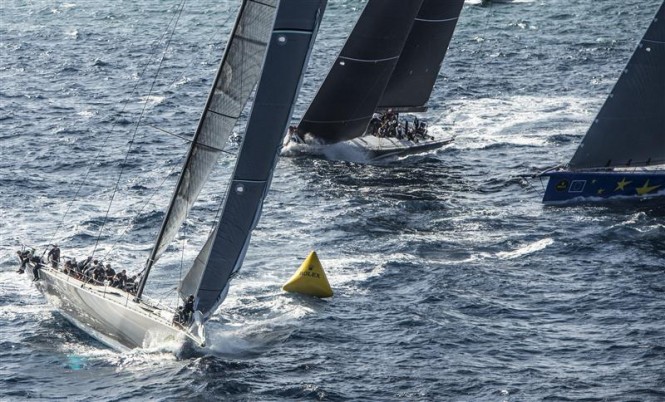
Sailing yacht Ran 2, superyacht Esimit Europa 2 and Stig yacht rounding the mark at the start of the 33rd Rolex Malta Sea Race - Photo by Rolex/Kurt Arrigo
The entrants taking part in the 2012 Rolex Middle Sea Race – one of the world’s great offshore races and a relative of other established classics like the Rolex Fastnet and the Rolex Sydney Hobart – have made a significant investment and commitment in their pursuit of conquering the race. Sponsored by Rolex since 2002, the Rolex Middle Sea Race is organized by the Royal Malta Yacht Club. First run in 1968 the competition exudes virtues of drive, determination and dedication.
The Details
Success in sport is strongly linked to proper preparation. The crew of reigning Rolex Middle Sea Race champion, the Maltese yacht Artie, has focused firmly on the 2012 race immediately since winning the trophy last year. “You don’t want to leave any stone unturned,” explained co-skipper Christian Ripard, before setting off on the 606-nm course that begins and ends on the island of Malta. “We’ve been working on the boat literally since the finishing the event last year and all through the winter. We’re always trying to improve.” Artie’s crew has invested countless hours in their desire to become the first boat to retain the Rolex Middle Sea Race Trophy since 1980.
Preparation can focus on the finest of details. “On a long race and with competition so intense you can’t afford to lose even ten seconds an hour,” explained the event’s legendary competitor Arthur Podesta, who has competed in all 33 editions of the Rolex Middle Sea Race. “For example, I keep updating our sails – each year an old one is replaced by a newer version.”
The Arrival
While local participants are able to concentrate on fine-tuning their boats, the logistics involved in moving foreign boats, plus associated equipment and crew, poses and additional problems and requires careful planning, particularly to an island. The vast majority of entrants have arrived from elsewhere in the Mediterranean, some in a highly competitive manner. The pan-European crew of Slovenian registered yacht Esimit Europa 2, line honours winner at the past two Rolex Middle Sea Races, made maximum use of the passage to Malta. “One of the training opportunities we took advantage of was racing the 700-nm stretch from Trieste to Malta in bringing the boat and full crew here. This enabled us to fine tune everything such as the positions and the watch system so we can be ready for the offshore race,” explained Spanish navigator Juan Vila, who has competed in both the America’s Cup and the Volvo Ocean Race.
Tim Powell oversees the logistical operations for Niklas Zennstrom’s yacht Rán 2, and sailed the yacht from Palma, Spain following an active season on the Mediterranean inshore racing circuit. “It’s a travelling roadshow with these boats,” explained Powell. “The easiest part is the boat getting here but then we have two 40-ft containers which need to be transported and with Malta being an island it’s a bit harder.” Once boat and containers were united, Rán’s 16-strong professional crew spent the week before the race organizing and preparing the boat’s sails and racing gear.
Fighting fit
For a fully professional team an offshore race is an extension of an already intense season of competition. Physical preparation is a vital component. “It is in everybody’s own interest to stay fit and the crew all have their own training programmes,” explained Powell. “Everybody knows the job they need to do and the fitness level that they need to reach.” For most this means punishing hours in the gym, and keeping a careful eye on their diet.
Food remains equally important during the race, and for the professional race boats there are additional components to consider beyond nutritional value – weight and ease of preparation: “Food on the boat is mainly freeze dried and light to carry. We add hot water, leave it for half an hour and it is ready to eat.” Protein and energy bars are commonly used to provide a vital boost between main meals.
For the Corinthian crews, nutrition is an equally significant focus. Podesta, skipper of Maltese yacht Elusive, appreciates the importance of hydration and replenishment. Elusive races both with dry food and more substantial pre-cooked meals. “In the ten days before the race we prepare a variety of meals and then the day before we put everything in the deep freeze of the boat in the order of what we’d like to eat first,” he explained. “I’m very fussy about eating good food on the race. If you don’t eat well, morale goes down!”
Sleep is another essential element. Most crews execute a watch system that dictates who rests when, enabling members of the team to catch a few hours sleep when possible. Not all crews enjoy this luxury to the same extent. Spare a thought for the ambitious French duo of Remy Gerin and Bernard Jeanne sailing Faiaoahe double-handed. Having to plan and execute all manoeuvres with just the two of them means sleep will be at a premium. “The preparation is in the head of the crew,” explained Gerin. “It’s important to get lots of rest before and anticipate changes in conditions as soon as possible.”
When light airs are forecast ensuring a boat is as light as possible is frequently part of the final preparation. “We have our own water maker onboard so we don’t have to carry 300 kilos [of water] around,” revealed Powell. “We analyse sails, spares, food. Whatever we can do to save a few kilos is going to benefit us in the long run.” Kuka Light of Switzerland was designed to be as a light, small, and fast as possible. Even this is not enough for skipper Mitch Booth: “We have minimized everything that we can possibly take and reduced the crew from seven to six. We couldn’t have done much more.”
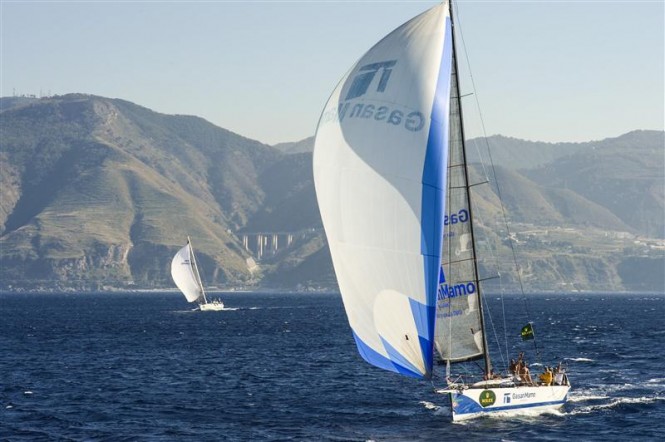
Comanche Raider II Gasanmamo yacht exists the strait of Messina in breeze - Photo by Rolex/Kurt Arrigo
The weathermen
Offshore racing is renowned for the navigational challenges it poses. The Rolex Middle Sea Race course pits the fleet on a mammoth anticlockwise loop around Sicily involving numerous ‘corners’ that introduce fresh challenges. Analyzing the forecast weather is a critical part of any crew’s preparation, both in terms of planning race strategy and ensuring the boat is ready to face the predicted conditions. “Generally speaking we start talking amongst ourselves about a week out and discussing what wind conditions we’re going to have,” explained Powell. “We try and work out what we need to focus on in the training. When we’re 24 hours out and we’ve got the boat sorted, we focus on the weather and the finer details of what we’re going to expect around the race track.”
It is an approach echoed by Vila. “From the navigation standpoint we start preparing more intensely from three days before the start; focusing on the start itself and then the race. A month out we study historical statistics but mostly the experience of having done the race before often dictates how you plan your sail inventory.”
“A lot is weighing on the navigator – he has a real headache managing the wind shifts,” advised Ripard. “Their job is full-time and most of the time the navigator will be awake with a lot of decisions to make.” “I’ve been monitoring the weather for the past three weeks and more intensely as the start approaches,” added Podesta. “Weather prediction is one of the most difficult things. It’s a winter race during a time of change. The man that predicts a perfect weather forecast is more than an Einstein!”
Ultimately no two offshore races are ever the same, and for all the preparation that is invested, crews still need to adapt and remain humble in confronting the elements. As Edmund Hillary, the first man to successfully climb Mount Everest once said: ‘It is not the mountain we conquer but ourselves.’ For the crews engaged in the Rolex Middle Sea Race that challenge is constant.
“This race is the most challenging we do in terms of changeable conditions. You might think you know everything but for sure you won’t!” counselled Powell, as Rán 2 set off to try and add success at the Rolex Middle Sea Race to her multiple victories at the Rolex Fastnet.

